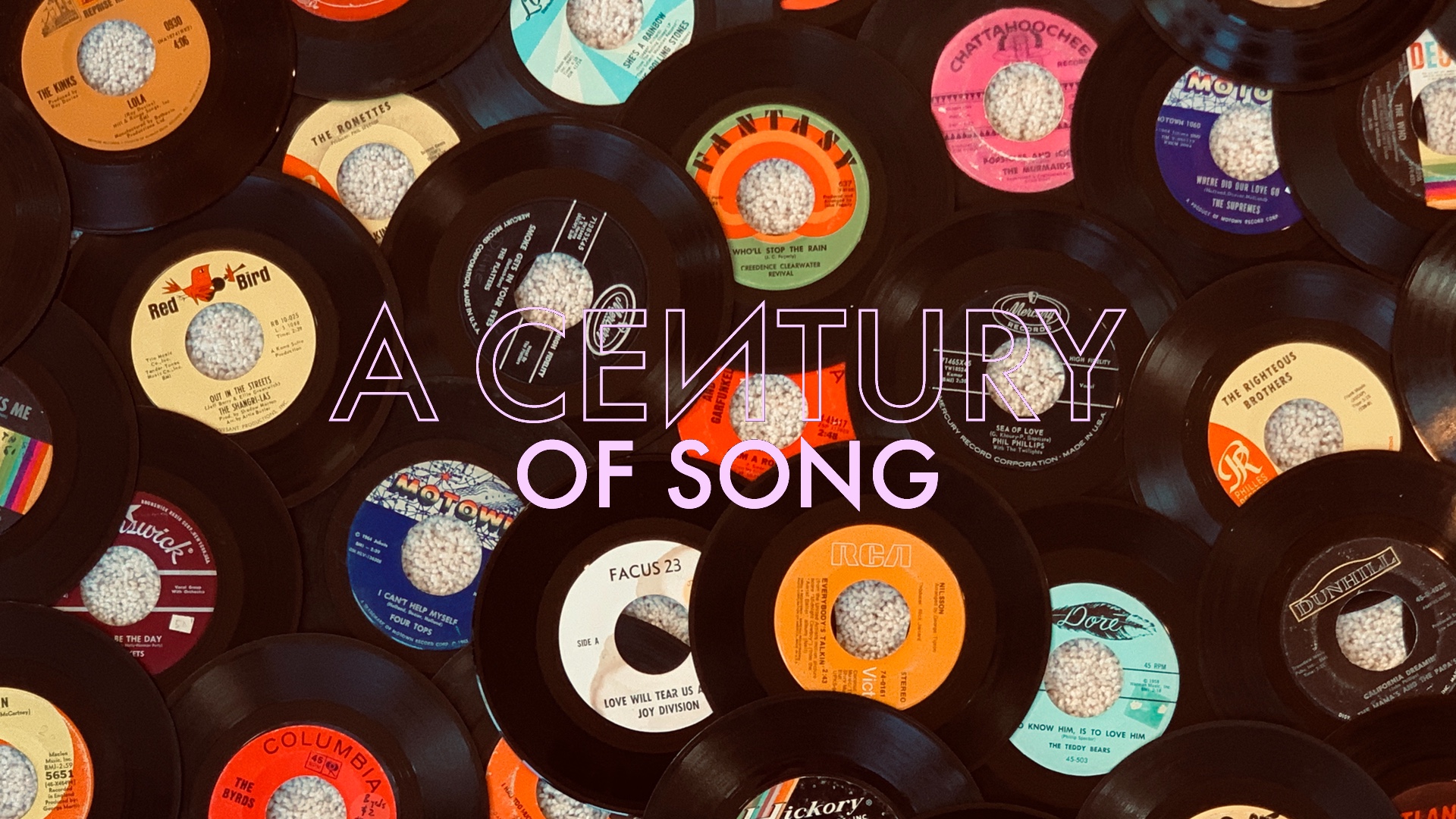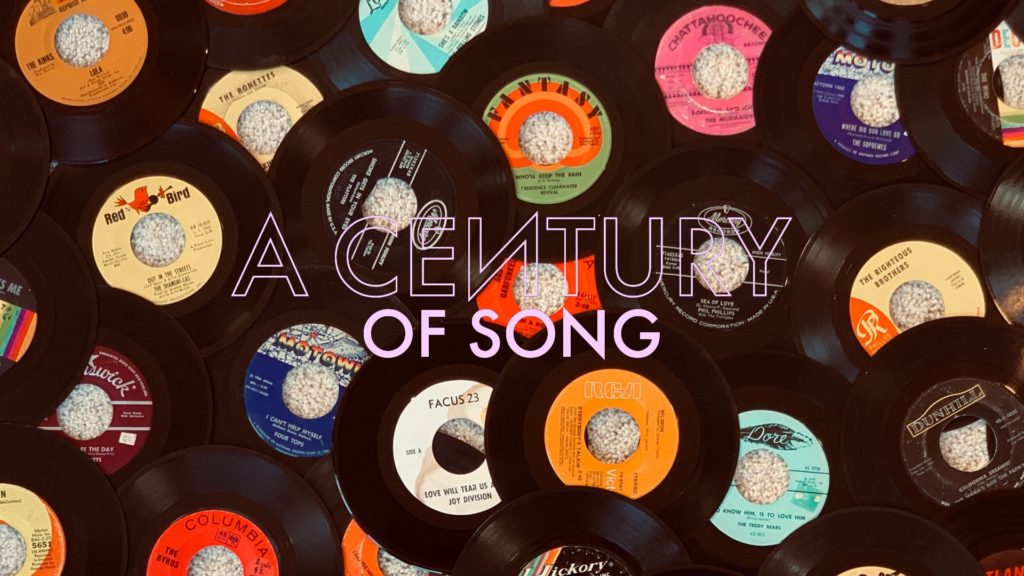
A Century of Song is an attempt to summarize 100 years of popular music through 1000 carefully chosen tracks. Included within this list are landmark singles, stellar album cuts, huge hits, hidden gems, and more than a few personal favorites. Read the introduction for the project here, and enjoy the embedded videos and Spotify playlist.
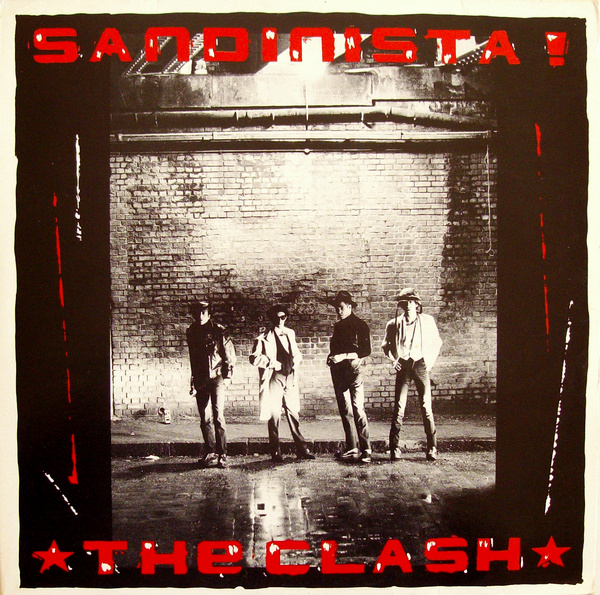
840
The Clash were no strangers to genre-hopping – as their masterful 1979 double album London Calling proved – but on 1980’s Sandinista! they took on a dizzying array of styles over six LP sides. While their experimentations yielded famously mixed results, the album’s opening track was a convincing homage to the emergent sounds of hip-hop.
Widely considered to be the first rap dalliance by a rock band, “The Magnificent Seven” was the product of The Clash’s – particularly Mick Jones’ – fascination with New York-based artists such as Grandmaster Flash & The Furious Five and The Sugarhill Gang. The band recorded the track in New York, and Joe Strummer tapped into the energy of the city’s hip-hop scene with his improvised lyrics. While there’s more than a bit of frivolity to his rhymes – some might even say a bit of dorkiness – the band’s embrace of an exciting new sound was characterized by their signature passion and sincerity.
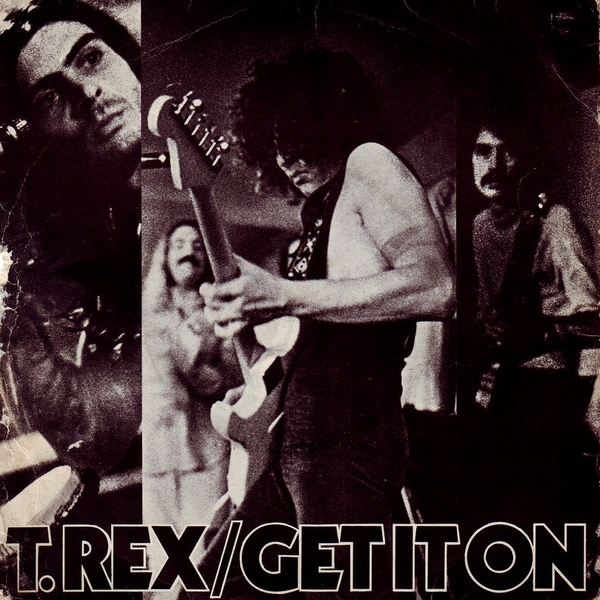
839
Since he is frequently cited as the first glam rock star, it’s tempting to view Marc Bolan as one who favored style over substance. However, behind the glittery facade of glam, there was a remarkably sharp and nuanced songwriter and an electrifying performer. That word, electrifying, would be referenced on the title of Bolan’s second T. Rex album, 1971’s outstanding Electric Warrior – one of the great rock records of the early 1970s.
The first single – and biggest hit – from Electric Warrior is one of the true glam anthems. “Bang a Gong (Get It On)” finds Bolan throwing out adjectives like they’re going out of style in the song’s verses, but it’s the platform boot-stomping swagger of the chorus that is most memorable. “Bang a Gong” rocketed to the top of the British charts in the summer of 1971, confirming Bolan’s song craft and star power.
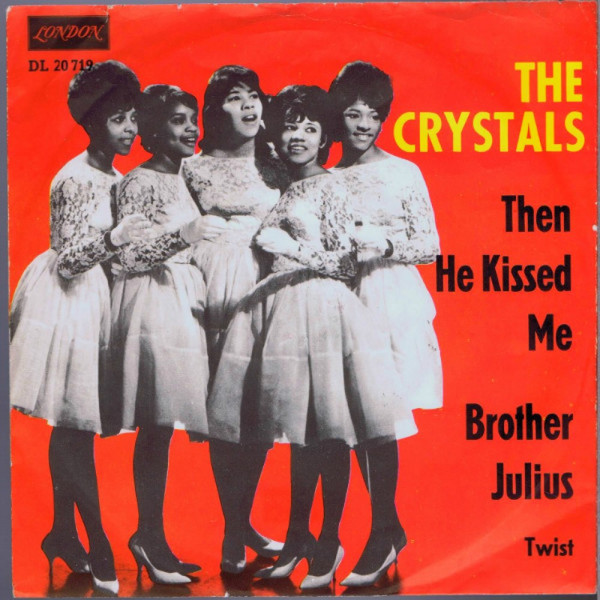
838
Producer Phil Spector perfected the art of the pop single in the early 1960s through the utilization of what he referred to as his “Wall of Sound” approach. Spector’s combinations of lush instrumental arrangements – often played by the famed Wrecking Crew of studio musicians – was designed to overpower any weaknesses in the material that he recorded. That wasn’t a particular concern on this 1963 hit by The Crystals.
“Then He Kissed Me” is a classic example of Spector’s production, and the girl group stylings of the era. After the introductory 12-string electric guitar riff, the backing track turns into a dense soundscape. Some individual elements can be picked out – the insistent castanets and galloping drums of Hal Blaine, in particular – but they are ultimately overwhelmed by the totality of Spector’s vision, and the glorious reverb of Gold Star Studios’ legendary echo chambers.
In a lesser Spector single, one can get so caught up in the sound of the instrumental track that it becomes easy to overlook the vocals. That doesn’t happen with “Then He Kissed Me.” One of the group’s most ebullient performances, the song is carried by the lead vocals of Dolores “Lala” Brooks. It’s a captivating track, one that Spector’s most talented admirer, Brian Wilson, would repurpose as “Then I Kissed Her” for The Beach Boys’ 1965 album Summer Days (And Summer Nights!!).
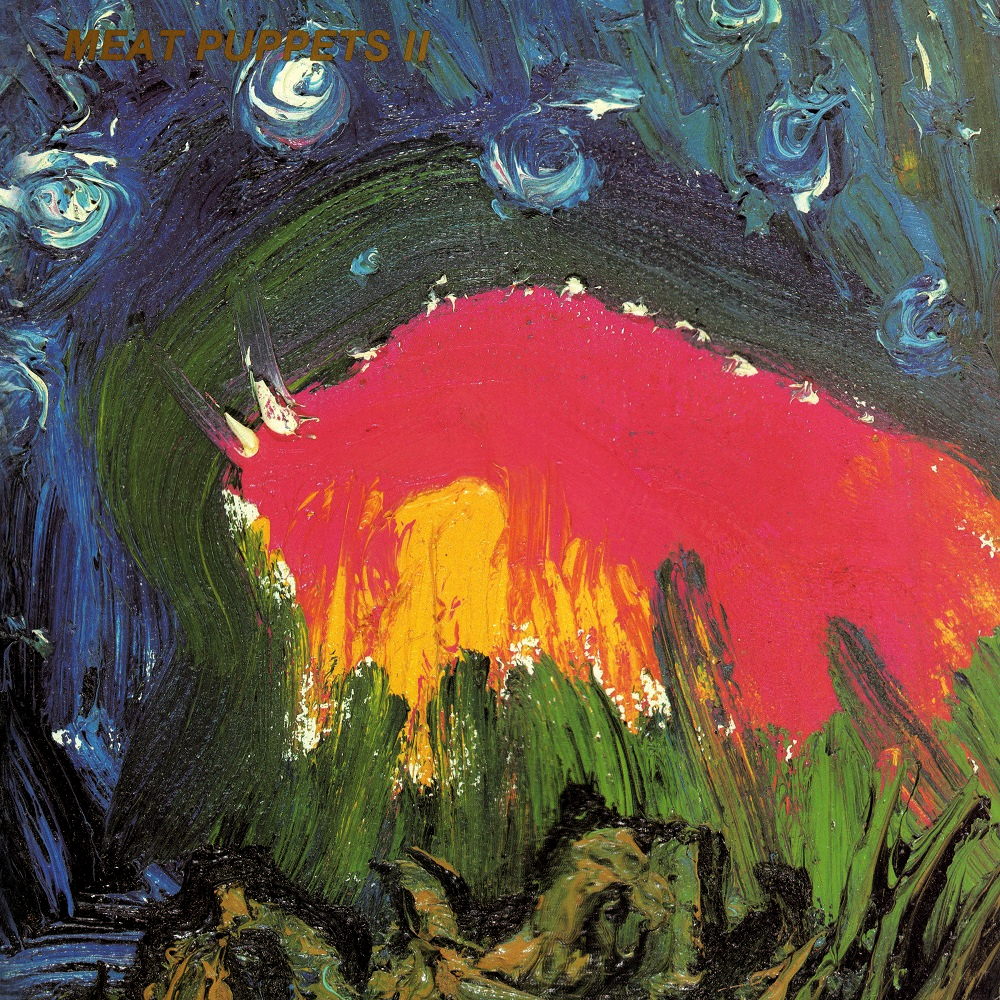
837
My favorite song on one of my favorite albums, “Lost” is the relative calm in the middle of the storm that is Meat Puppets II. Surrounded by frantic punk and surreal psychedelic visions, “Lost” finds the Kirkwood brothers and Derrick Bostrom more grounded than they are anywhere else on the landmark record, and leaning heavily into the country influences that have characterized much of their career.
Not only is the music of “Lost” uncharacteristically straightforward, but Curt Kirkwood’s concerns seem more terrestrial than those on the surrounding tracks. There are no grand plateaus, fiery lakes, or trippy hallucinations – just a wanderer, who has “grown tired of living Nixon’s mess.” It’s an eminently relevant gripe, especially when living in the aftermath of another self-proclaimed “silent majority.”
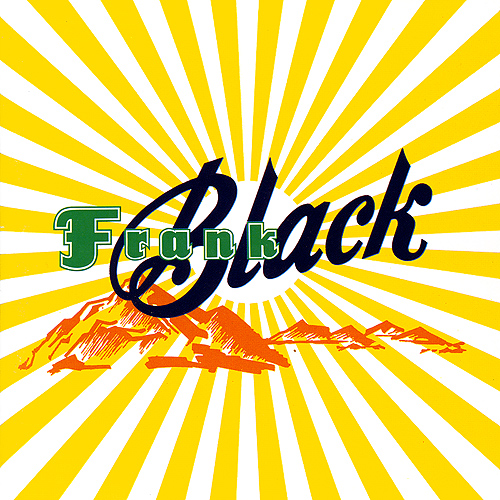
836
Black Francis infamously broke up with his Pixies bandmates via fax in early 1993. The exclamation point on that message was his first solo album, Frank Black, which arrived just weeks later. In many ways a natural progression from the final Pixies record, Trompe le Monde, Frank Black found the enigmatic songwriter further exploring the bizarre cultural references and sci-fi intrigue of his earlier work.
Released as the album’s first single, “Los Angeles” is the highlight of Frank Black. Opening like a folk song, the track quickly shifts gears into metallic riffage, heavy drums, and alternating time signatures – ever inscrutable, Black utilized a stock group of generic “hard rock” musicians in this section of the song’s video. The track ends with a majestic reprise of the opening melody – one of the most surrealistic moments in Black’s catalog.
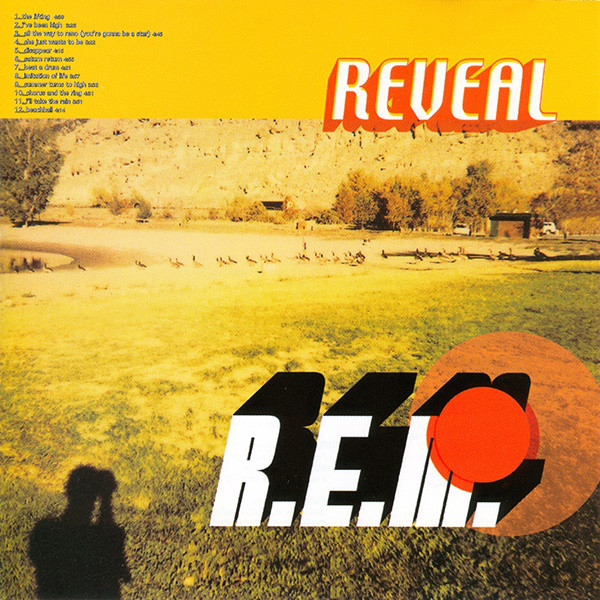
835
In an In the Wilderness feature, I referred to this song as the last great R.E.M. track. “Imitation of Life” recalled the sound of classic R.E.M. singles, while successfully integrating the lush, Beach Boys-inspired sounds of their early “post-Berry” work. To top it off, the song’s video is phenomenal – an impressively-complex “single shot” piece that is like the Sgt. Pepper album cover brought to life.
“Imitation of Life” is the last song that I can ever remember listening to the radio specifically to hear. Released several weeks in advance of 2001’s Reveal, the single arrived shortly before the age in which any song could be cued up instantaneously. I was unable to track down a physical copy of the single, so for the first time in at least a few years, I intentionally tuned in to the local rock station to catch it. That sense of scarcity is now a relic of a long-distant past. I imagine that it’s difficult for most people to understand the strange appeal of wanting to hear a song but having to wait for it, but I miss it sometimes.

834
A whirling dervish of a song. A blast of punk a decade before Sex Pistols or Ramones. “7 and 7 Is” sounded like nothing else on the scene in the mid-sixties. Its creators – the Arthur Lee-led band, Love – were a unique entity as well. Best known for the majestic baroque pop of their 1967 masterpiece, Forever Changes, Love lived communally in a Los Angeles mansion, and were one of the first racially-mixed American rock groups.
“7 and 7 Is” is defined by its breakneck pace and dramatic intensity. The proper song lasts less than two minutes – all skittering drums, plunging bass, and crashing chords, lying underneath Lee’s breathless vocals. It comes to a screeching halt with the sound of an atomic bomb – pulled from a studio sound effects archive – before a brief denouement, straight out of a fifties-era senior prom. It’s a wild, exhilarating track that stands with the best singles of rock’s golden age.
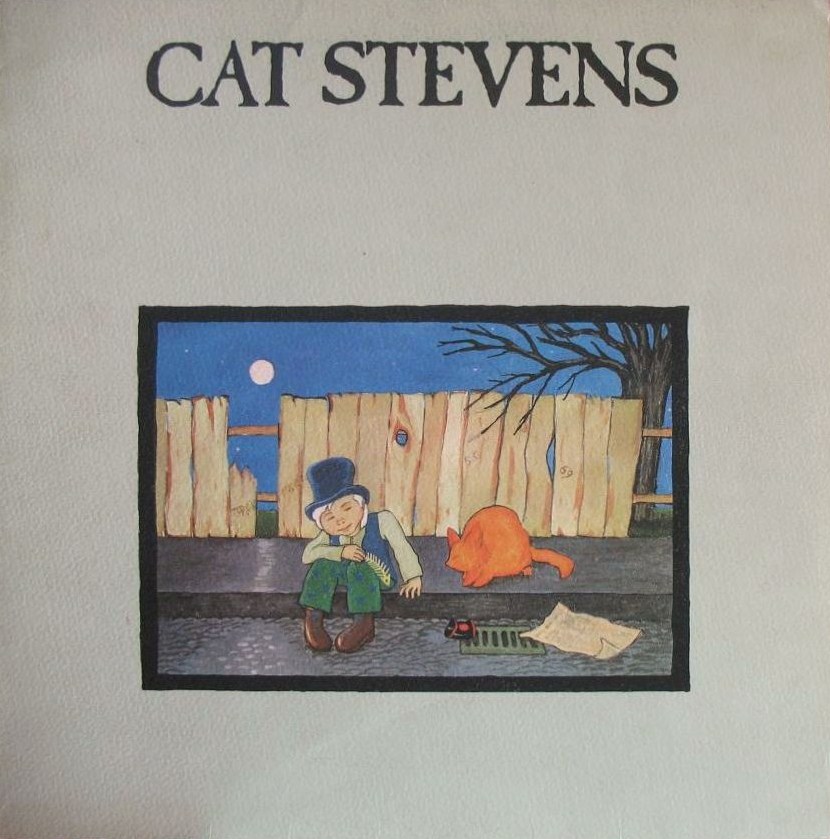
833
I spoke briefly of my admiration for this song – my favorite track by Cat Stevens – in a feature on the Rushmore soundtrack. As the musical accompaniment to Max Fischer’s redemption scene, “The Wind” adds gravity through its own sense of buoyancy. Apart from that scene, it’s simply a masterful piece of songwriting.
Already a superstar by the time of its release, “The Wind” was the opening track to Stevens’ 1971 album, Teaser and the Firecat. While Stevens had achieved fame through his mellow brand of folk, “The Wind” was even more restrained and stark than his usual fare. Its brief run-time and album placement even seemed to suggest that it was merely a prelude to the more fleshed out tracks that follow, but however minor it may seem, “The Wind” speaks volumes.
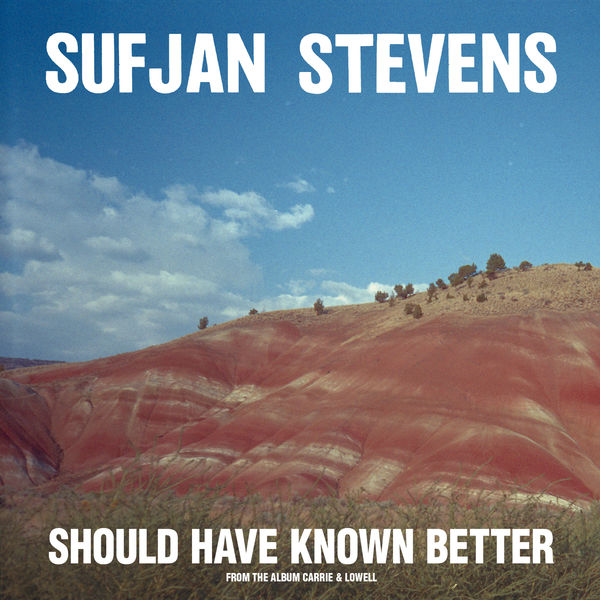
832
Sufjan Stevens’ Carrie & Lowell is the finest singer-songwriter album of the 2010s, and one of the best folk records of all-time. Written after the death of his estranged mother, the album’s eleven tracks find Stevens alternating between grief and introspection, with results that are rarely less than heartbreaking.
One of Carrie & Lowell‘s most affecting tracks, “Should Have Known Better” details a relationship that was hopelessly out of Stevens’ reach. He recounts being abandoned by his mother at a video store at the age of “three, maybe four” – his longing for that most visceral of human connections dismissed as a mere “fantasy.” It’s gut wrenching, but delivered with the hushed elegance of his best work. In the song’s second half, the mood shifts to a brighter tone, as Stevens finds a silver lining: the mistakes of his family’s past will not perpetuate to its next generation.

831
On “Ping Pong,” Stereolab prove that they’re not afraid to bite the invisible hand that (allegedly) feeds them. As a social studies teacher, I take slight issue with an indie pop band giving a lesson in history and economics, but I suppose it’s forgivable when delivered in this catchy of a fashion.
Representing the peak of their so-called “Space Age Bachelor Pad Music,” “Ping Pong” matches the group’s signature analog synths with an invitingly warm horn arrangement. Laetitia Sadier’s lyrics offer up commentary on “business cycles,” and the collateral damage that they leave in their wake. At the time, critics accused the band of trying to sneak Marxist messaging into their music, but the commentary of “Ping Pong” has only grown more relevant in the decades following its release.
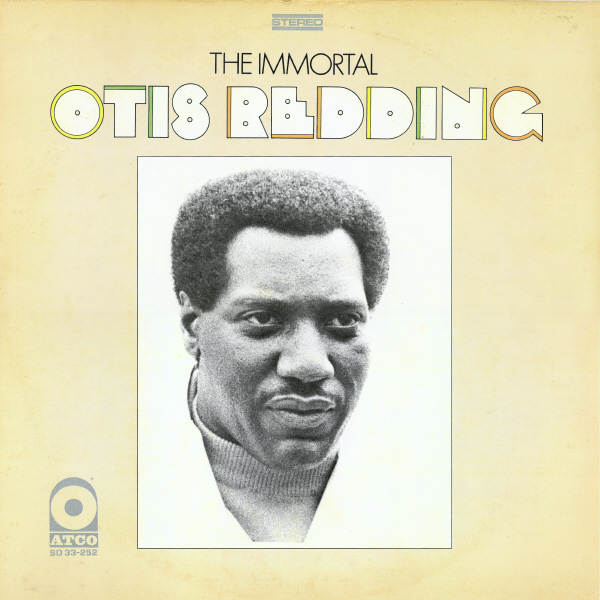
830
Otis Redding was already a star when he died in a plane crash in 1967 at the age of 26. However, it’s arguable that Redding’s greatest tracks were released after after his premature death. One of these, “I’ve Got Dreams to Remember,” is the highlight of the posthumously released 1968 album, The Immortal Otis Redding.
Produced by Steve Cropper – who played guitar on the track – “I’ve Got Dreams to Remember” features one of Redding’s most powerful vocal performances. Redding had always been noted for the raw emotional quality of his voice, but he sounds particularly vulnerable on this track. “Dreams” starts intimately, but builds to a powerful crescendo that reveals the gospel influences at the heart of Redding’s craft.

829
D’Angelo songs are deceptive. Sometimes, it’s tempting to argue that they don’t go anywhere, but instead, linger in their mellow grooves. His tracks are generally subtle, but rarely less than impressive. Arguably the signature recording in his frustratingly limited discography, “Untitled (How Does It Feel)” is a neo-soul classic.
“Untitled” begins sparsely, but it builds slowly over its seven-minute run-time. Aside from the guitar and bass (played by Raphael Saadiq), D’Angelo performs every other instrument, but the focal point remains his sultry vocal take – a point emphasized by the song’s attention grabbing, one-shot music video, which helped to make it his biggest hit to date.
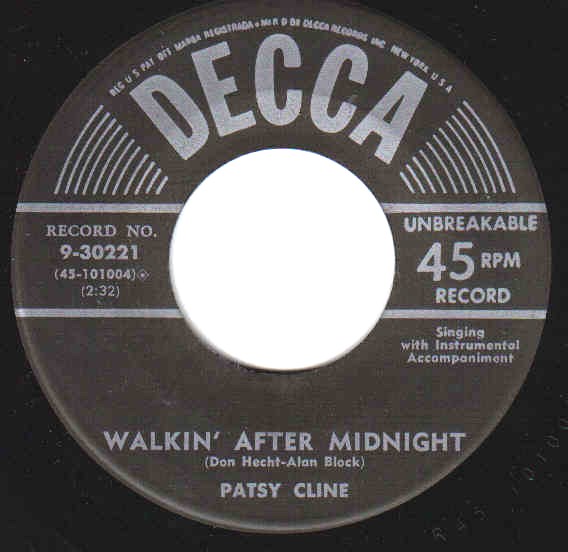
828
The breakthrough hit for Patsy Cline, “Walkin’ After Midnight” is one of the definitive country recordings of the 1950s. Cline herself was not originally sold on the song – composed by Donn Hect and Alan Block – but she realized its potential after a show-stopping performance on Arthur Godfrey’s Talent Scouts in early 1957.
“Walkin’ After Midnight” would be rushed out to record buyers following that performance, and the single would find the upper reaches of the charts shortly thereafter. Cline would struggle to duplicate its success over the next few years – even returning to the song in 1961, re-recording it in hopes of landing another hit.
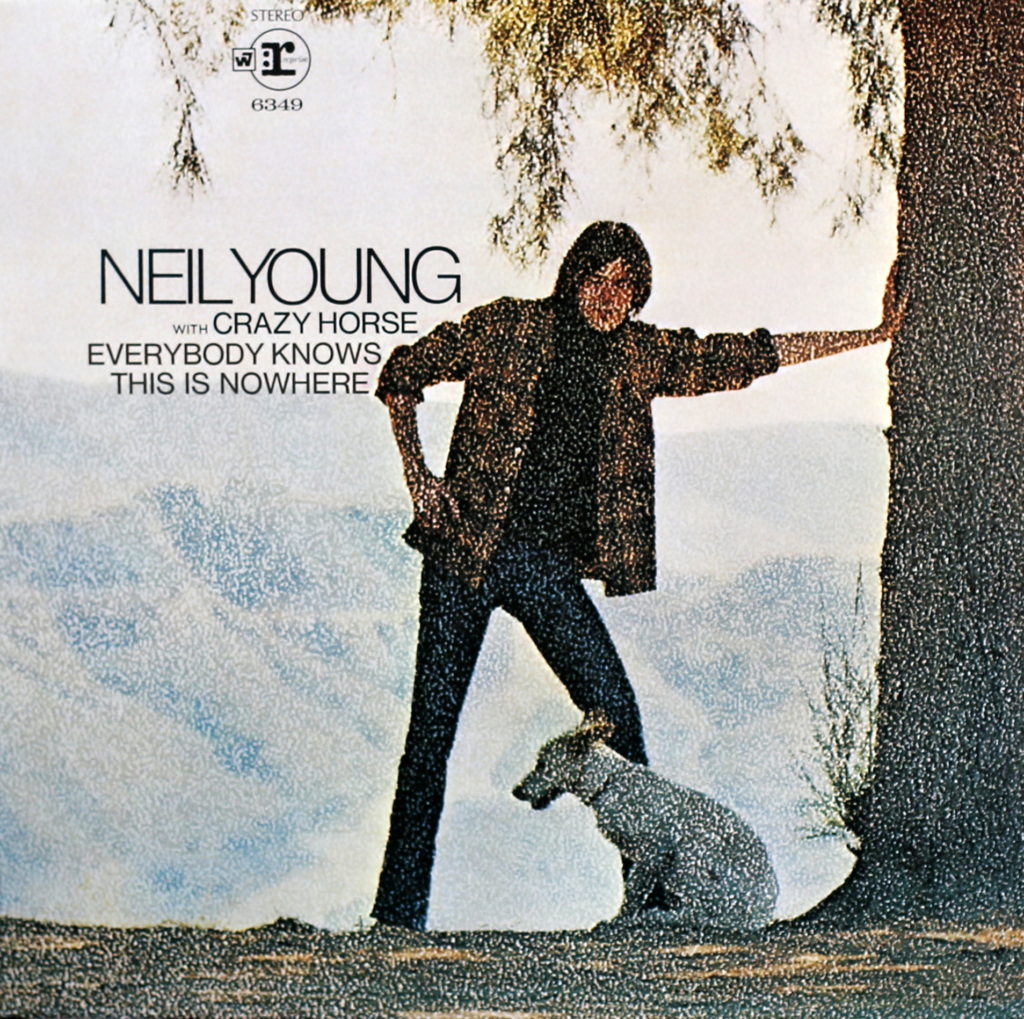
827
Neil Young had already released his solo debut in early 1969 – following his departure from Buffalo Springfield – but it was on the quickly-released follow-up, Everybody Knows This Is Nowhere, where he truly arrived. Joined by his backing band Crazy Horse for the first time, it was on a pair of lengthy guitar workouts that Young would begin to find his voice.
Closing out the album’s A-side, “Down By the River” is a harrowing tale of a lover scorned – the brutality of his act of revenge symbolized by Young’s stabbing guitar work. His primitive solos are a blatant rejection of the virtuosity displayed by contemporaries, such as Eric Clapton, but they convey intense emotion through their insistent repetition and brute force.
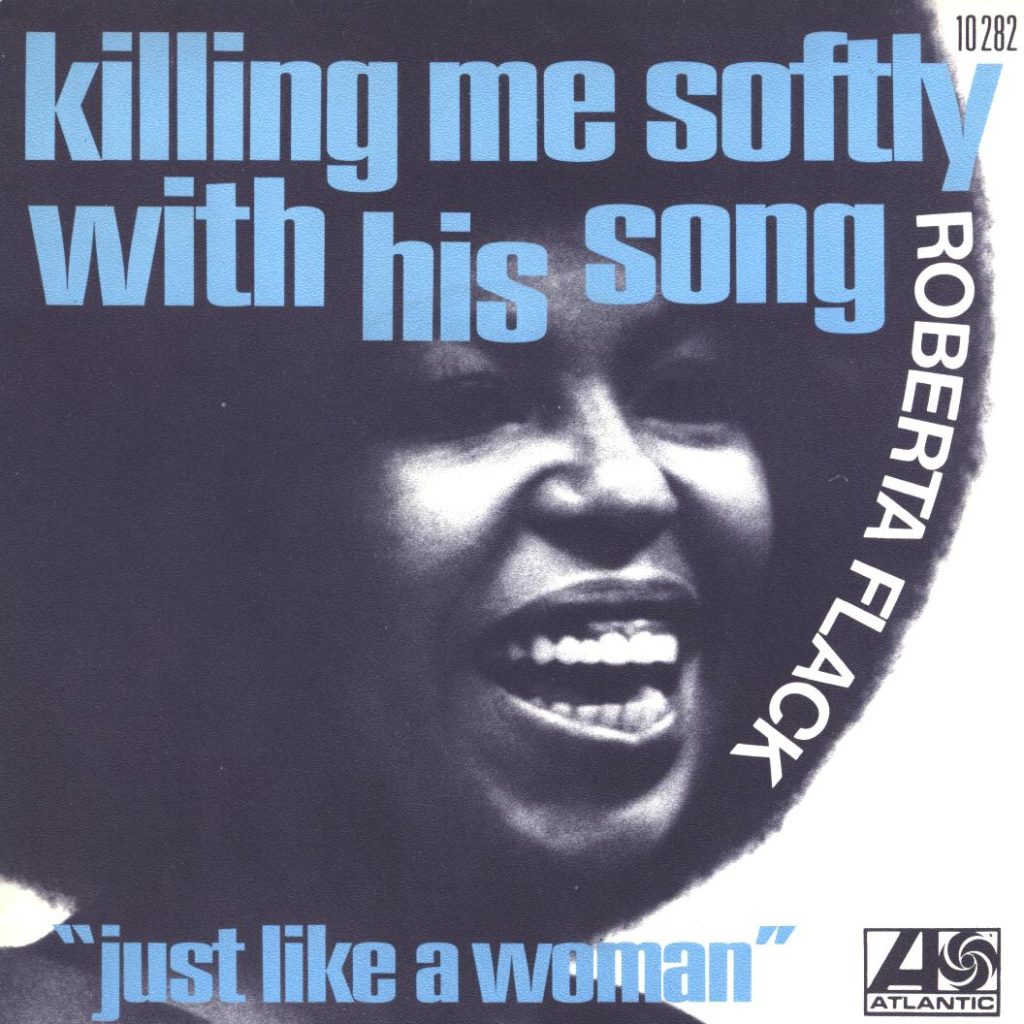
826
One of the great pop love songs, “Killing Me Softly” was first recorded by twenty-year old Lori Lieberman, who was so inspired by a Don McLean live performance, that she began writing the genesis of it as she watched him on stage. Fashioned into a song by the team of Norman Gimbel and Charles Fox, “Killing Me Softly” would become a #1 hit in the hands of Roberta Flack, who released her own version in 1973.
While restrained, Flack’s version ups the tempo slightly, but retains the emotional core of Lieberman’s original recording. Her arrangement creates an impressive atmosphere, highlighted by the haunting echoes of her backing vocals. In 1996, the hip-hop group Fugees would score a hit with their own take on “Killing Me Softly.” Though Lauryn Hill’s vocals made for another great interpretation of the song, this version edges it out as the one to beat.
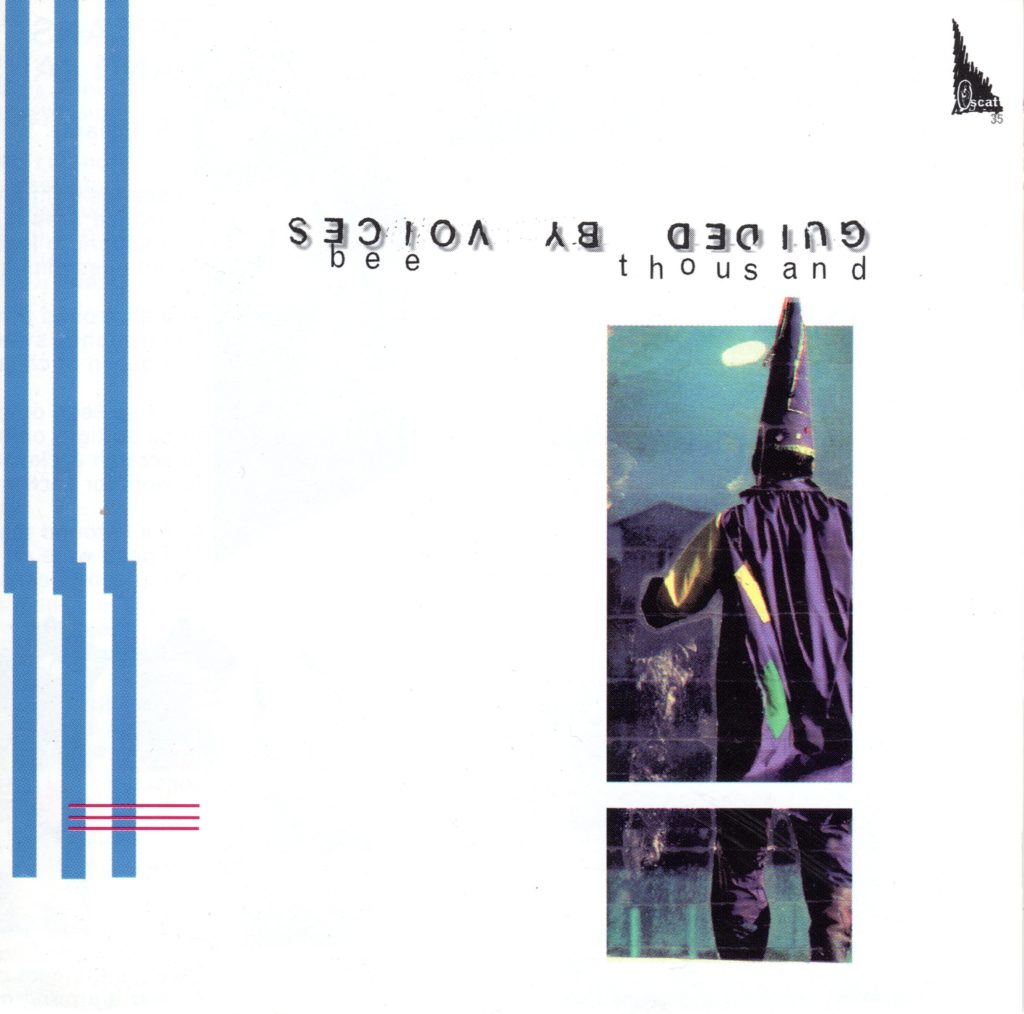
825
A gold mine of pop hooks was uncovered when Guided by Voices broke through with their 1994 classic, Bee Thousand. Fronted by fourth grade teacher, Robert Pollard, Guided by Voices was essentially a project between drinking buddies with a four-track recorder and an army of songs. 1992’s Propeller had put the band on the radar of indie labels, and Bee Thousand would get a boost through a distribution deal with Matador Records.
One of Bee Thousand‘s most effervescent songs, “Echos Myron” is essentially all chorus, despite having no chorus. Joined by bandmate Tobin Sprout on backing vocals, Pollard gives a crash course in his idiosyncratic and eminently quotable lyricisms. While Pollard is cryptic as ever in the track, one gets the sense that – as the leader of a band that spent a decade releasing their music into the void – there may be a shade of autobiography revealed in the song’s final verse:
“If it’s right you can tell”
Echos Myron like a siren with endurance like the Liberty Bell
And he tells you of the dreamers, but he’s cracked up like the road
And he’d like to lift us up, but we’re a very heavy load
And we’re finally here
And shit yeah, it’s cool
And shouldn’t it be
Or something like that…
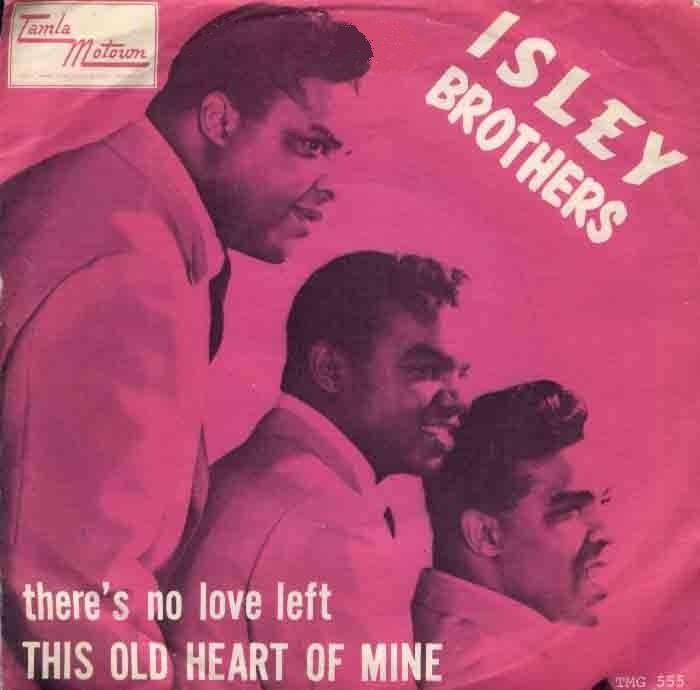
824
One of the longest running success stories in soul music, The Isley Brothers reached their peak with this outstanding 1966 single for Tamla Records – a division of Motown. “This Old Heart of Mine” was a chart success for the group, but their tenure with the Motown affiliate would ultimately be a brief affair.
Propelled by the dynamic instrumentation of Motown’s house band, The Funk Brothers, “This Old Heart of Mine” features the label’s classic production elements – an insistent rhythm, airy strings, and a melodic vibraphone – plus a nice surprise in its slightly “fuzzy” bass line. Ronald Isley’s impassioned vocals soar above the track – a fantastic performance that is the critical ingredient in the group’s finest single.
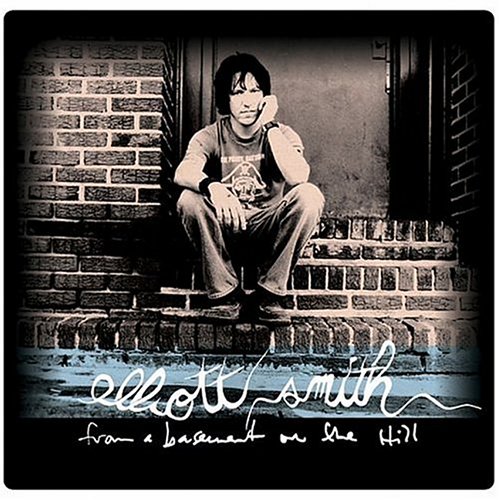
823
Elliott Smith died on October 21, 2003. His final record – From a Basement on the Hill – appeared almost exactly a year later. Originally planned by Smith to be a sprawling double record in the vein of the “White Album,” Basement was brought to completion by a group of friends and family, who ultimately assembled it as a single-disc tribute to the beloved singer-songwriter.
Basement is an often harrowing glimpse into the troubled last years of Smith’s life. Many of its tracks are uncomfortably revealing, and it’s not hard to identify the autobiographic elements. Perhaps nowhere is this more apparent than on “A Fond Farewell,” a song that finds Smith acknowledging his addiction to heroin in a surprisingly direct fashion.
“A Fond Farewell” paints a decidedly unglamorous portrait of addiction (“Veins full of disappearing ink/Vomiting in the kitchen sink“), and Smith is brutally honest as he describes his condition:
The cold comfort of the in between
A little less than a human being
A little less than a happy high
A little less than a suicide
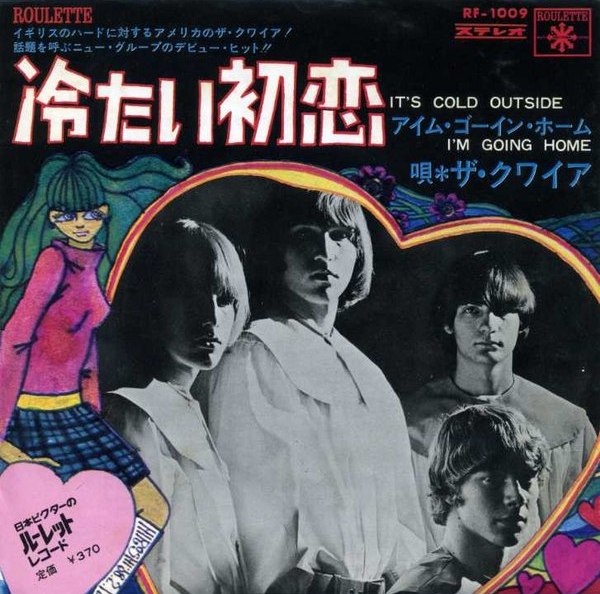
822
Formed in Cleveland in the mid-sixties, The Choir would score a local hit with the A-side to their first single, “It’s Cold Outside.” Written by the band’s drummer, Dann Klawon, the song’s exuberant energy and soaring vocal harmonies make it one of the most endearing garage rock recordings of the sixties.
Having learned their craft by performing covers of British Invasion bands, The Choir created a convincing replica with “It’s Cold Outside,” while simultaneously retaining the charming amateurism of a garage act. It’s a somewhat ramshackle performance, but the song’s melody, and Dave Smalley’s plaintive vocal – which anticipated his later work with The Raspberries – help to make the song a classic.
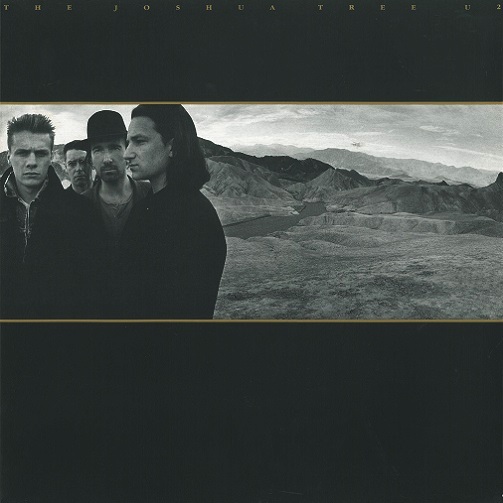
821
On my first day of fourth grade – at Titus Elementary School in Warrington, Pennsylvania – my teacher had the class answer a set of “get to know you” questions on an index card. One of the inquiries asked us to name our favorite song. It’s the first time that I can ever remember being asked to publicly commit to a musical opinion, but my answer came swiftly and decisively. In blue pen, in my best cursive, I wrote: “Where the Streets Have No Name.”
I had spent most of the previous summer in Arizona. My family had moved to Pennsylvania a year earlier, but my mom, brothers, and I went back home to visit family for a couple of months. During the multi-day drives to and from Phoenix, I rented my older brother’s Walkman several times in fifty-minute increments, becoming familiar with an album that he had recently gotten heavily into: U2’s The Joshua Tree.
It was a natural fit. Matching the spacious production of The Joshua Tree with the empty grandeur of fly-over country was like shooting fish in a barrel (just look at the cover), but I was a kid – just learning about how music could evoke landscapes, and vice versa. The Joshua Tree was desert, but it was also truck stops, Stuckey’s billboards, and never-ending road signs for Meramec Caverns. It was wide open. Endless. The opening synth notes of “Streets” were a boundless invitation to a world that was unknown – perhaps even unknowable.


